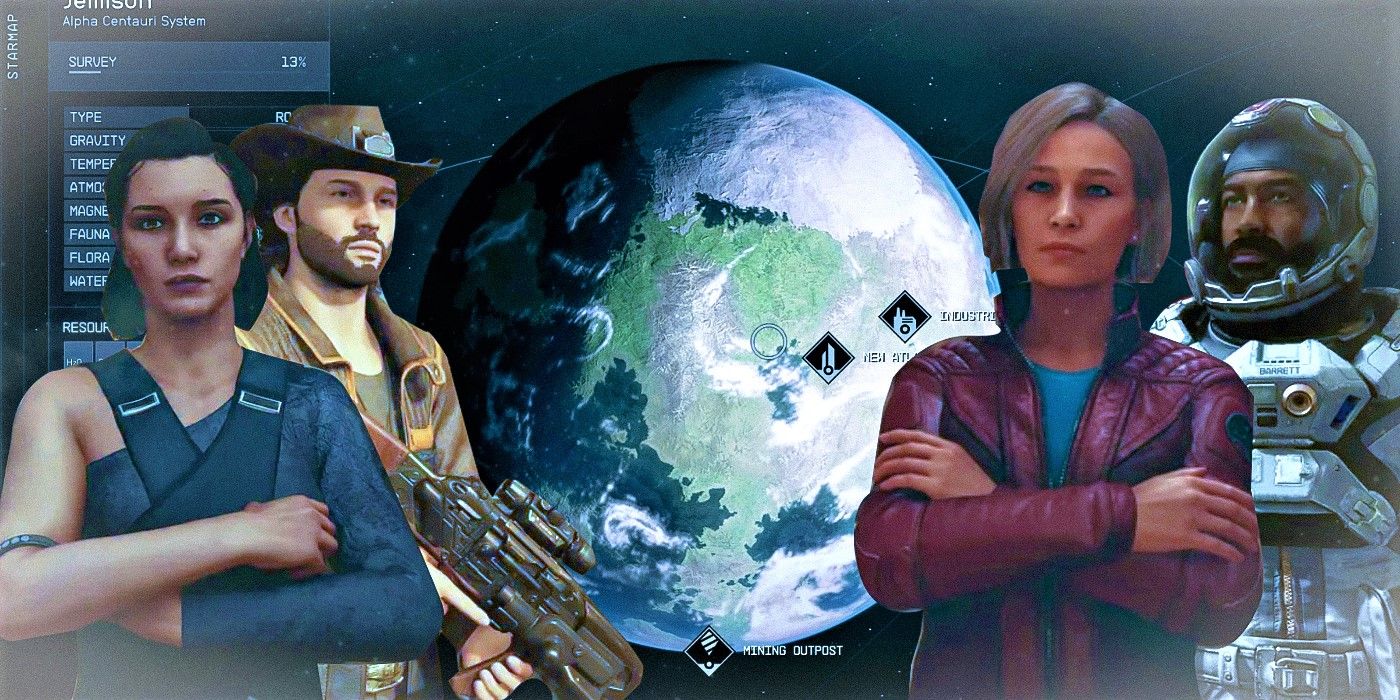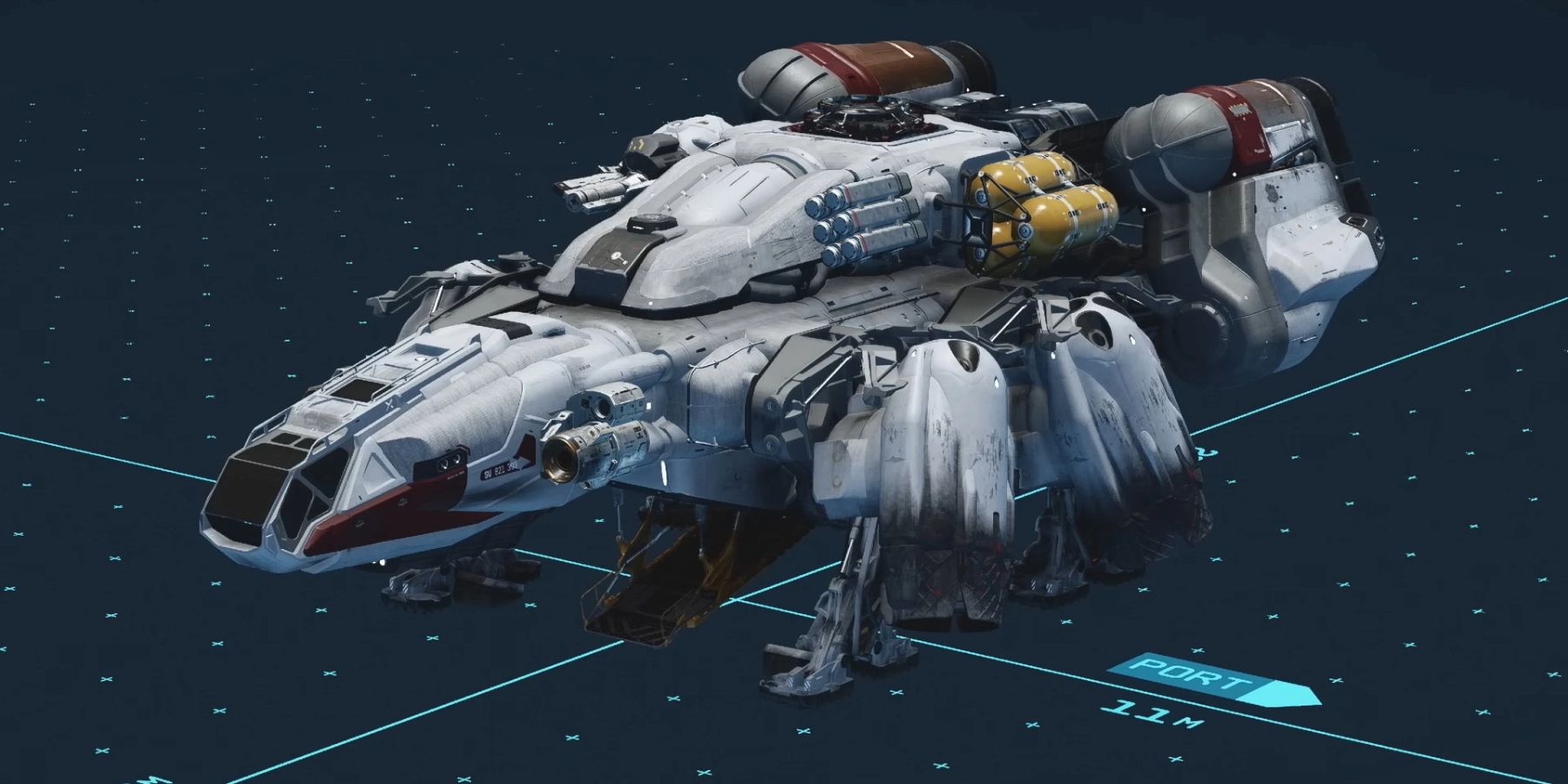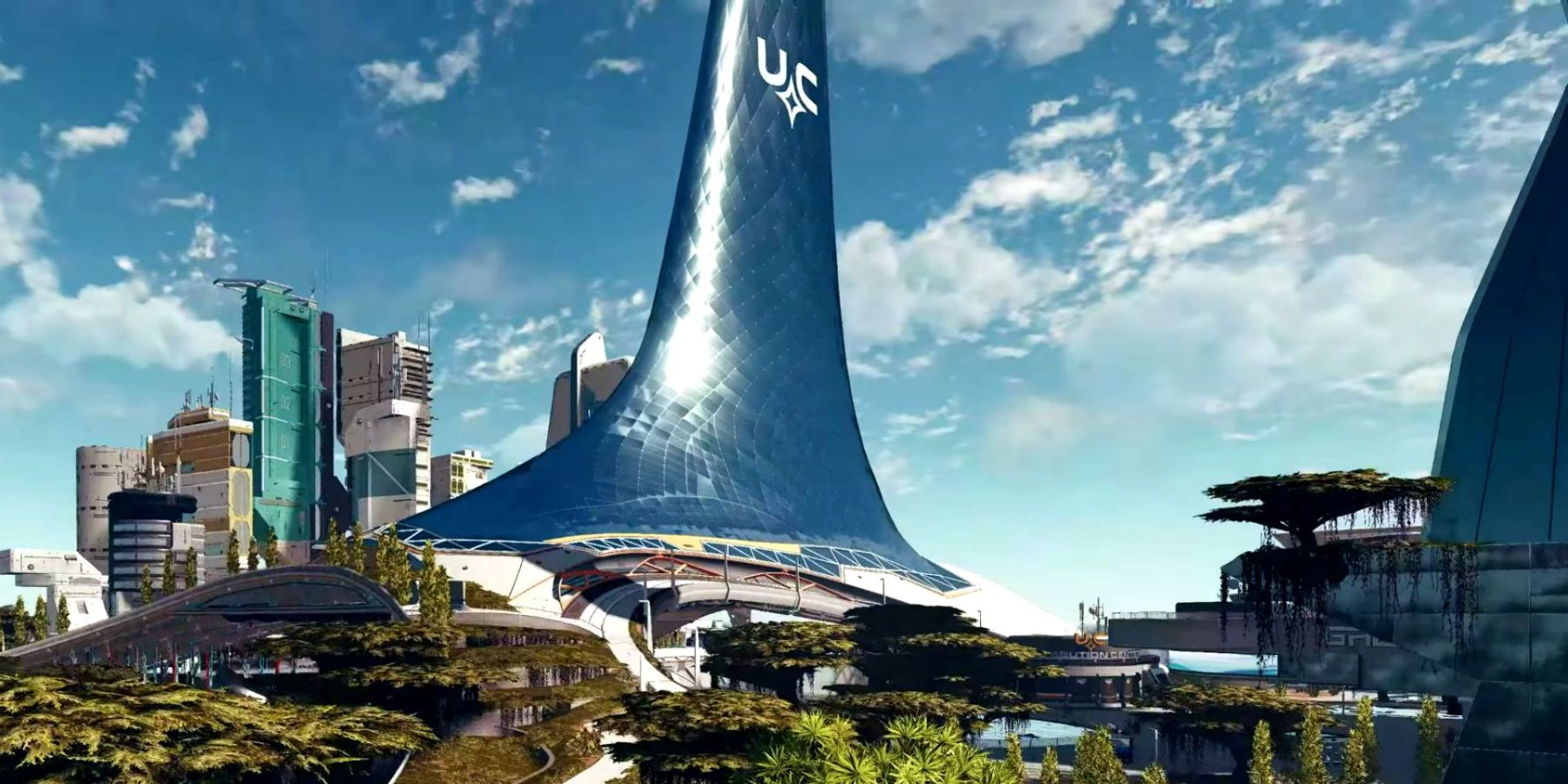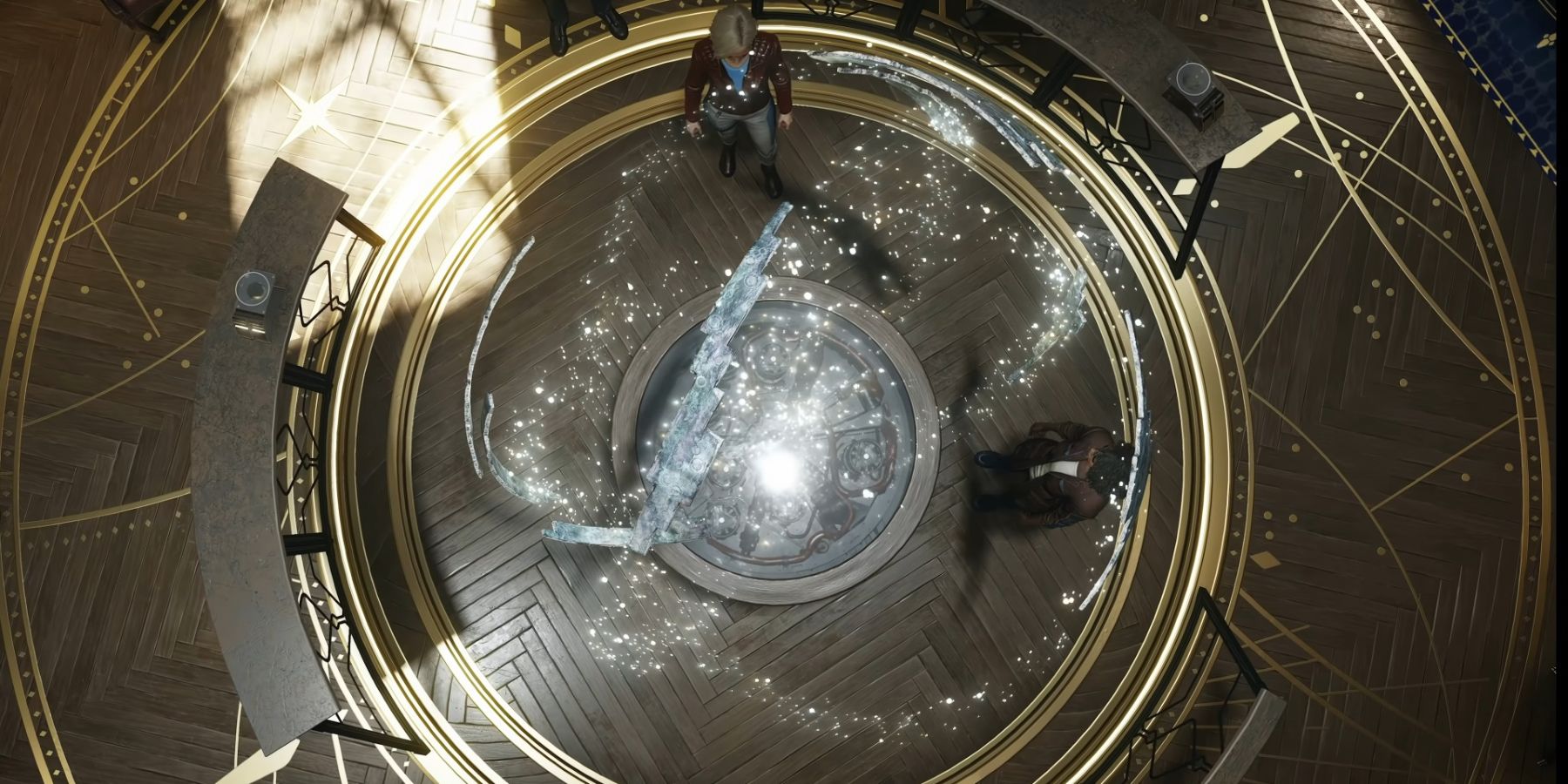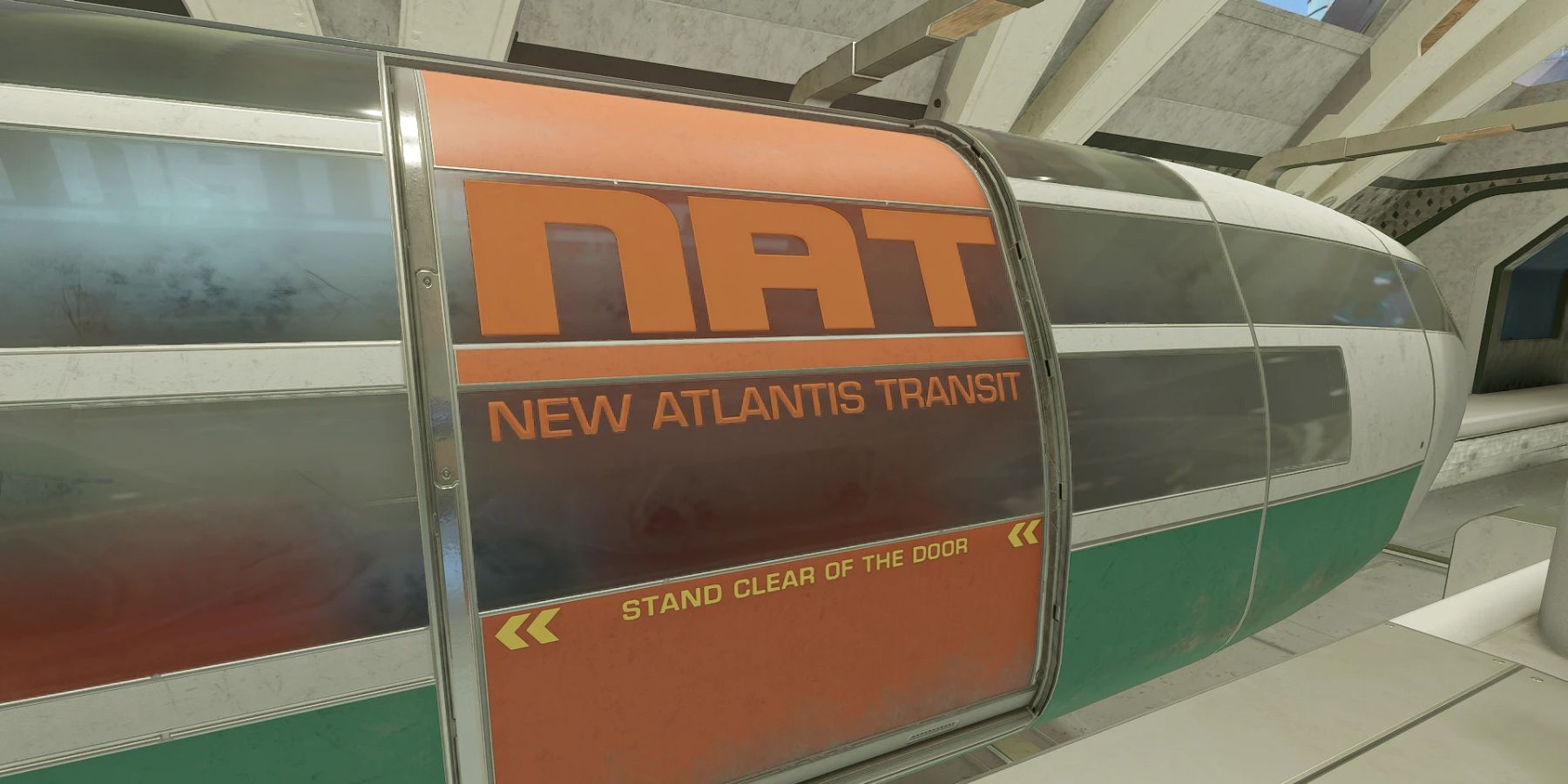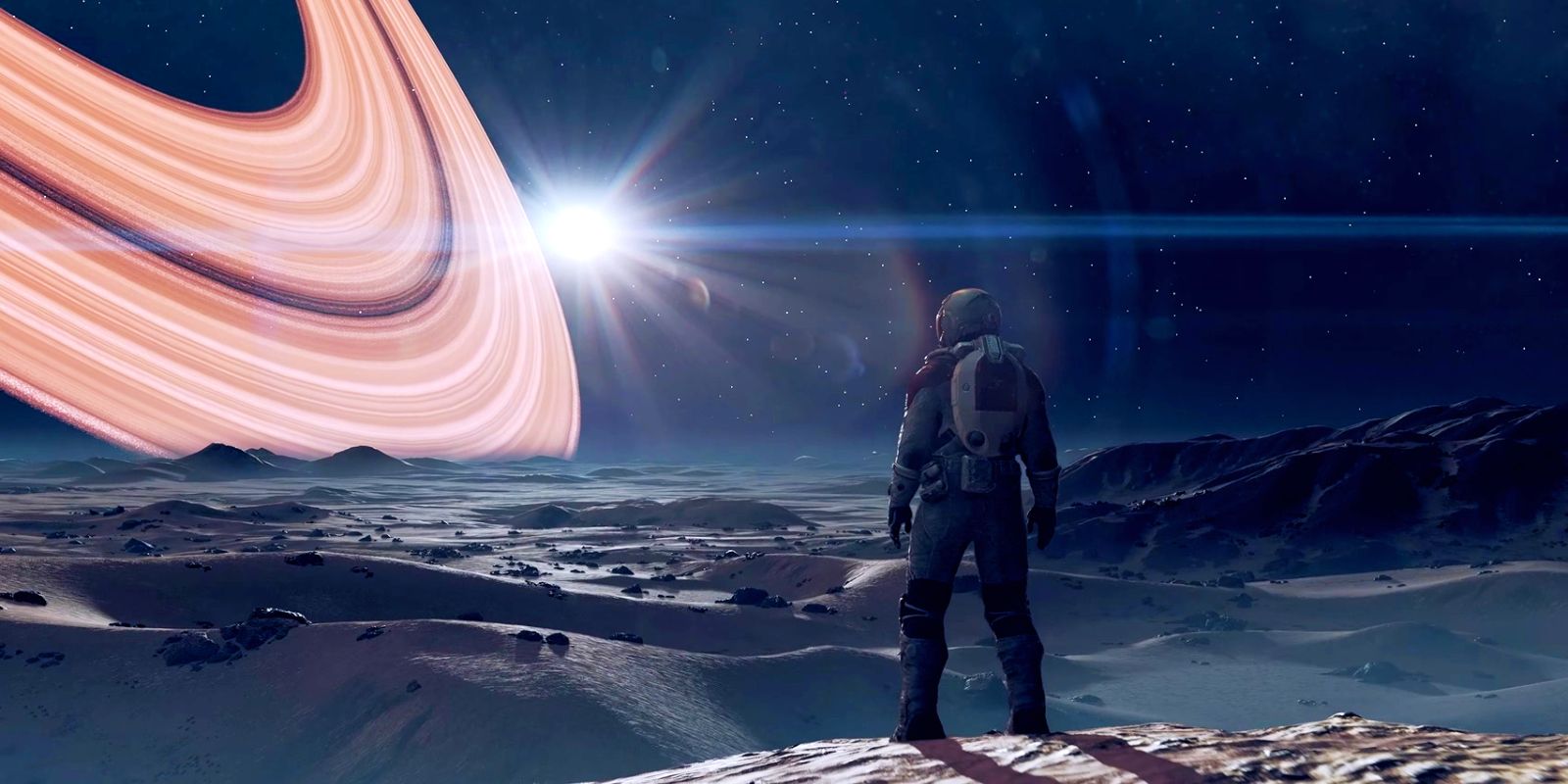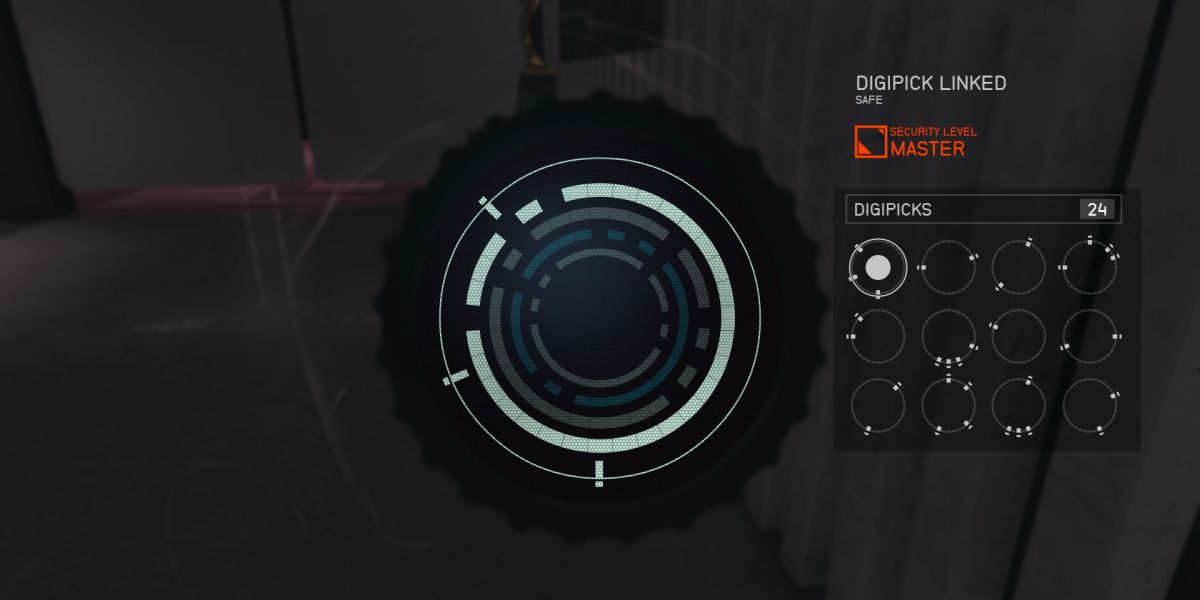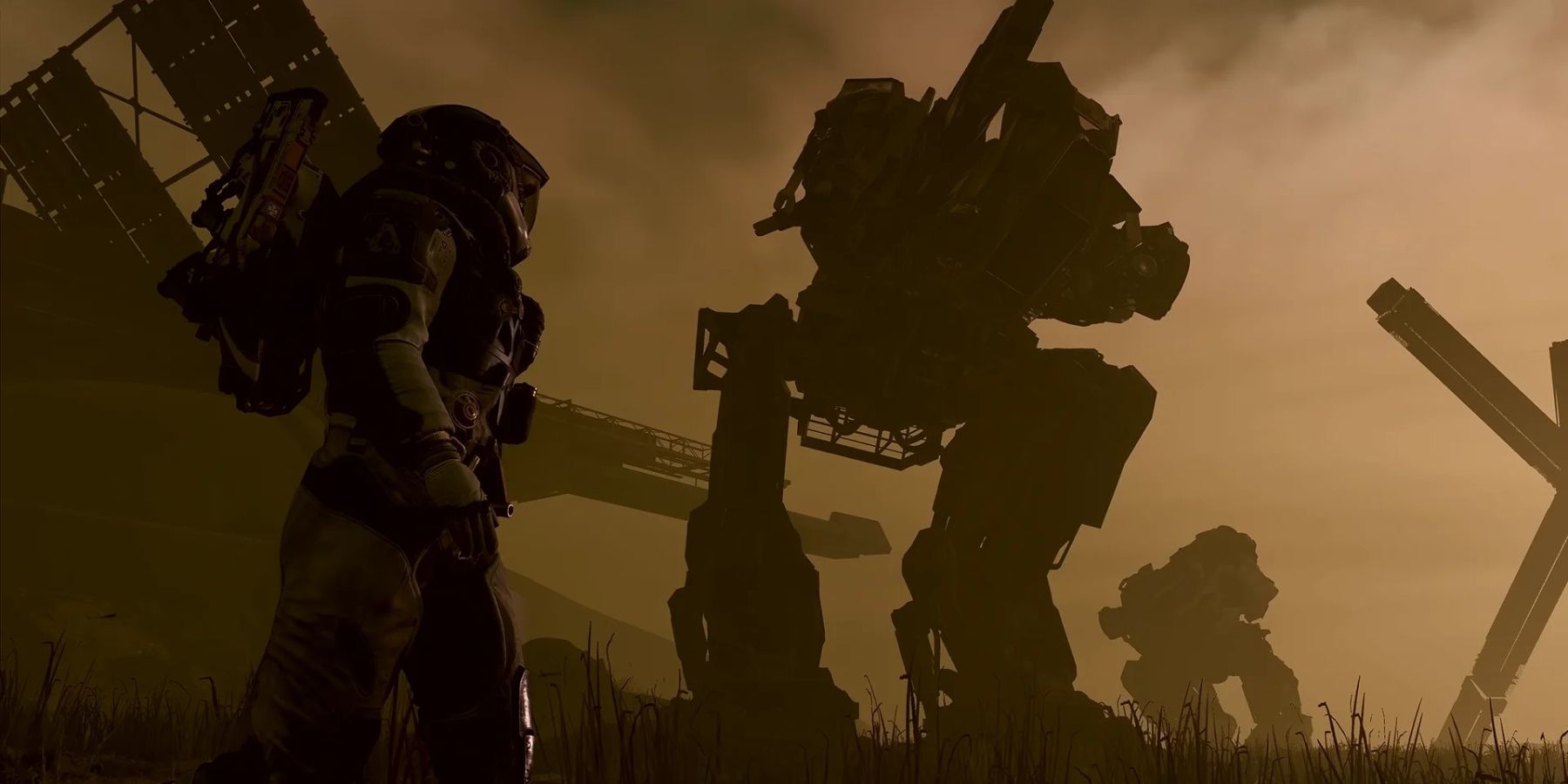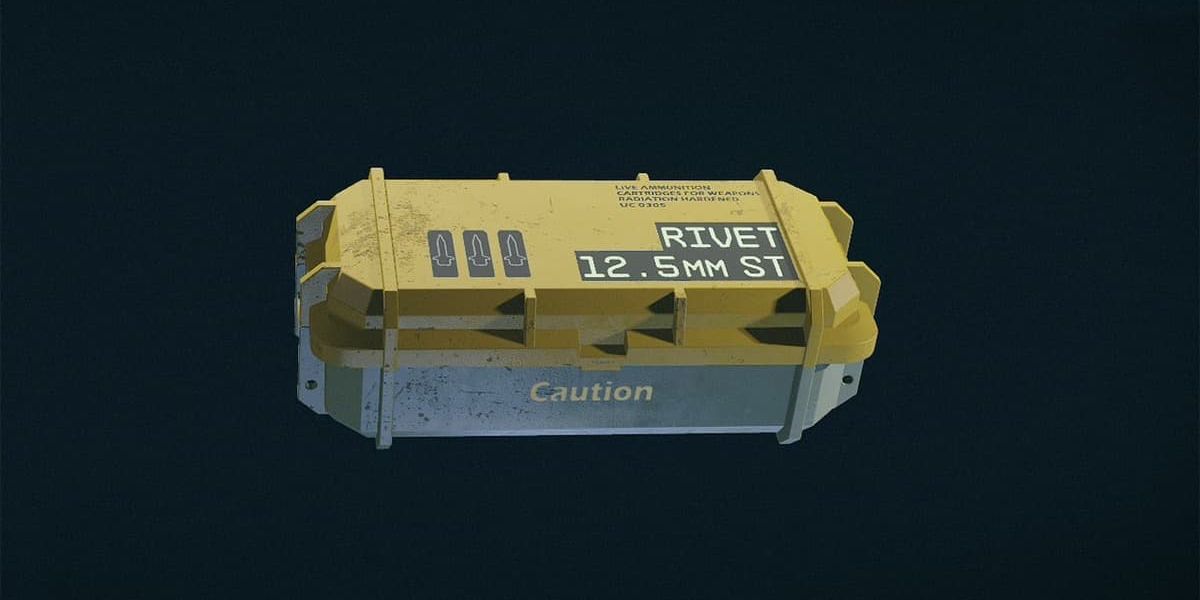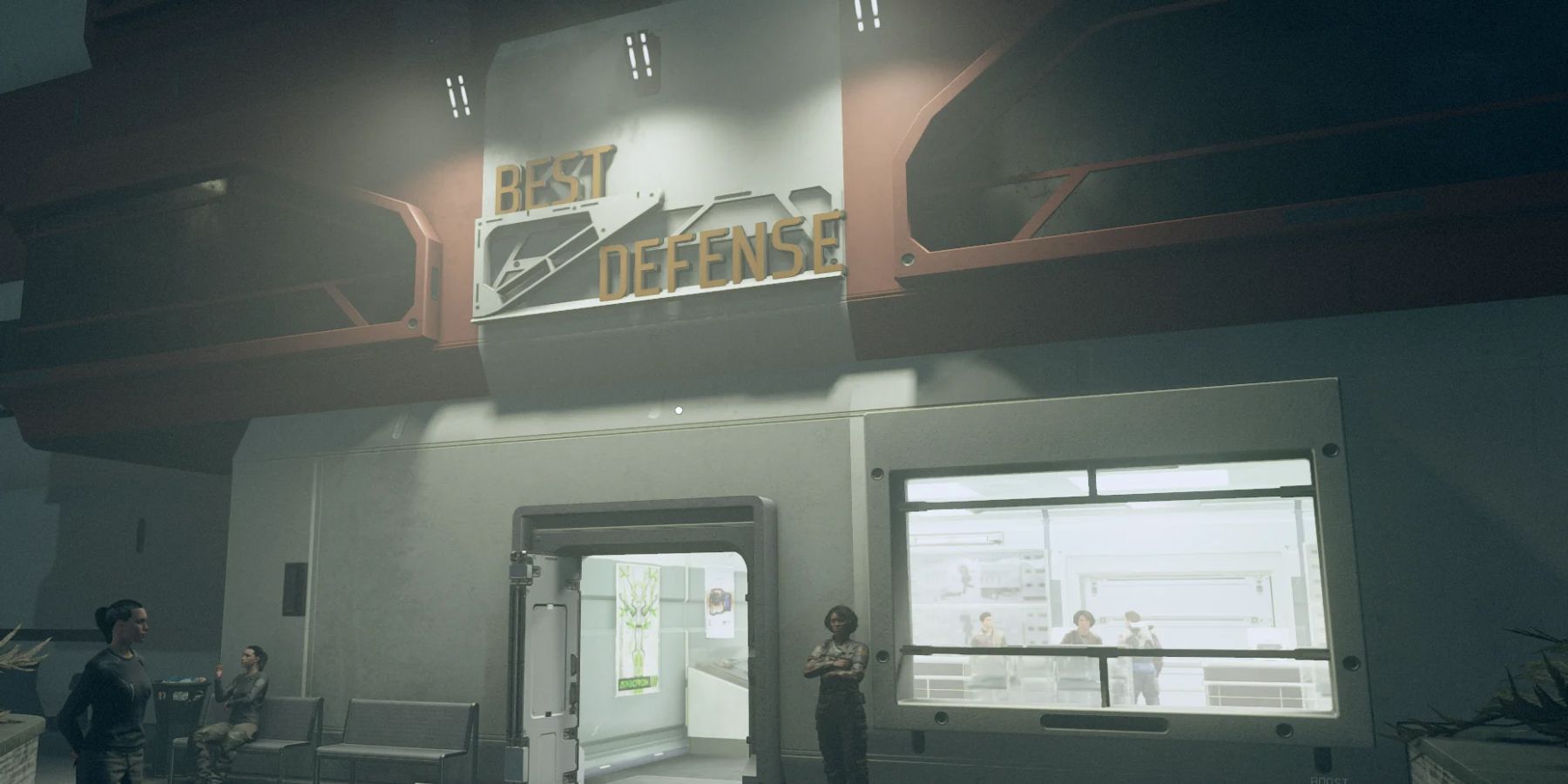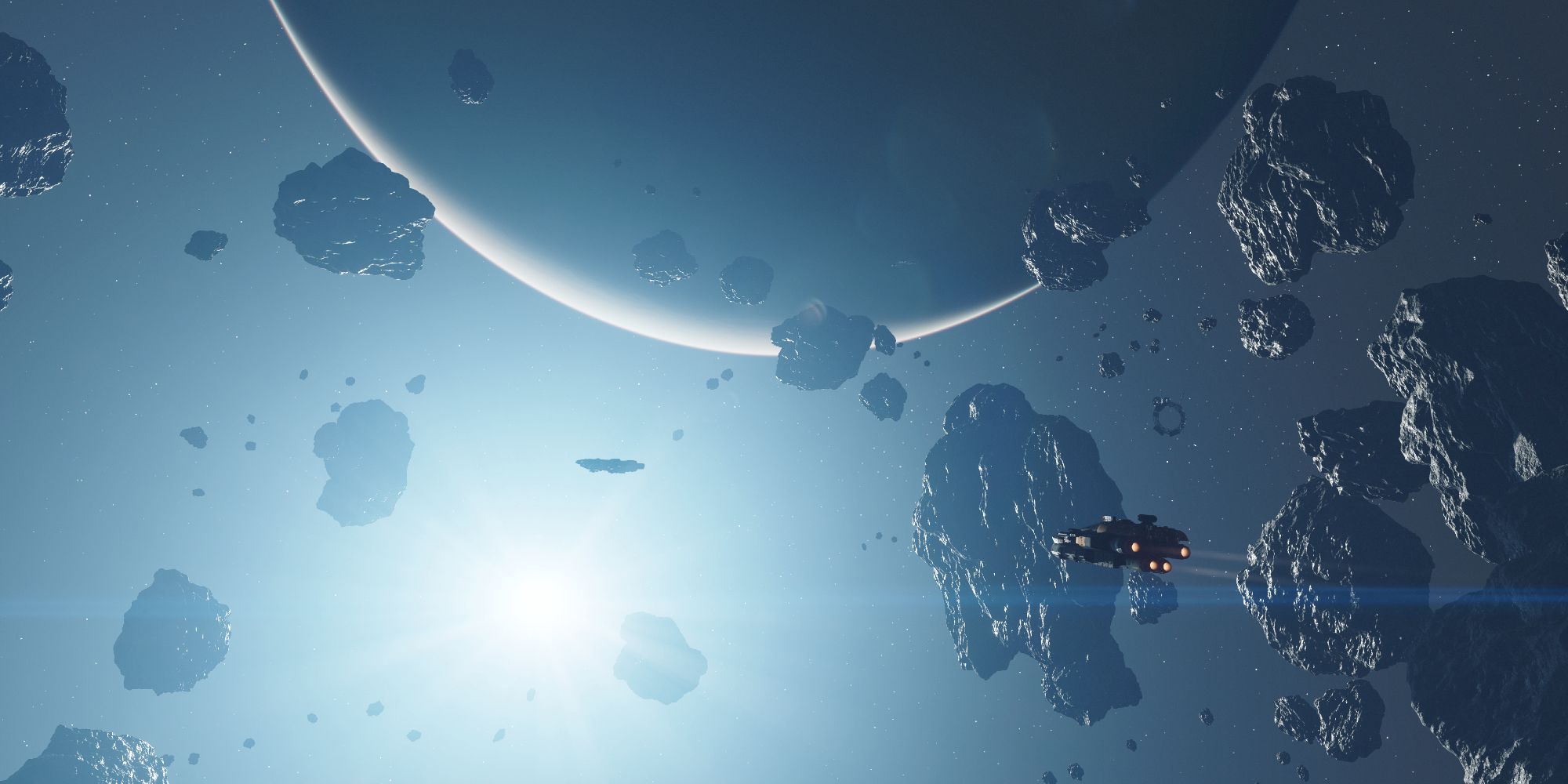Starfield is incredibly immersive, and its sheer size is almost mind-boggling, but there are still some aspects to its game world that don't make any sense. Bethesda Game Studios' interstellar RPG is incredibly ambitious, but it still builds upon a foundation established by 2006's The Elder Scrolls 4: Oblivion. Nearly everything in Starfield can be interacted with, and hundreds of NPCs can be engaged in conversation. The game's breadth leads to a number of things that aren't quite as they should be, but other nonsensical features are symptoms of game design, world-building, or just incorrect science.
Bethesda's latest heavily incentivizes exploration; before Constellation, the game's main faction, gets its primary mission in hunting down mysterious artifacts, it's essentially an explorer's guild. Humanity has settled numerous star systems after being forced to flee Earth and its collapsing atmosphere, but most of Starfield's 1,000+ planets and moons remain unexplored. Sci-fi technology like grav drives and the powers granted from temples throughout the galaxy always require some suspension of disbelief, but other oddities in Starfield's Settled Systems remain head-scratchers.
10 Cargo Habs Don't Increase Cargo Capacity
A distinct highlight in the freedom Starfield gives players is its extensive ship-building mechanics. Pre-built vessels are purchasable throughout the Settled Systems, but each on is modular, and can be torn apart to be rebuilt entirely different. One of the more important stats players will keep an eye on when designing a ship is its cargo capacity, and despite there being modules in the Habs menu labeled as Cargo Halls, these inexplicably don't increase the ship's overall cargo capacity. Only Cargo Holds (a separate menu from Habs) increase hauling capabilities, which may have ramifications on a ship's aesthetic.
9 Planets Have Only One City
Humanity has spread far and wide in Starfield, but it seems incapable of building more than one settlement on any given habitable planet or moon. New Atlantis and Akila City, for instance, the game's two largest cities, are the only civilization on their respective planets. It's understandable that Bethesda would aim for variety when designing the Settled Systems – planet-hopping is one of the main selling points of Starfield – but it also feels like a missed opportunity for storytelling. Territorial or political conflict between neighboring cities or towns is sorely missing from even Starfield's most rewarding quests.
8 More People Don't Know About The Artifacts
The central mystery of Starfield's main story are the artifacts the player first comes into contact with in the game's prologue mission. Constellation is baffled as to their purpose, and the explorers' group seems to be the only organization aware of their existence. However, once the player starts hunting down more artifacts, some are found in caves filled with Spacers or Ecliptic mercenaries, yet they don't seem to be public knowledge. Furthermore, it seems unlikely no one else has stumbled upon the temples which give the player their powers, even though the scanner interference they cause would warrant investigation, and the structures themselves are easily visible on a horizon, not to mention the gravitational anomalies that cause large chunks of rock to float in the air.
7 There Aren't Any Ground Vehicles
Adding a whole second vehicle system on top of Starfield's ship-building is understandably a tall order, but the game is noticeably devoid of any ground vehicles. New Atlantis has its own transit system, perfect for its urban design, but a frontier town like Akila City especially feels as though it'd benefit from some sort of rover. Being able to drive a rover would be a boon to gameplay, but even just seeing some around would do wonders for the game's world-building.
6 Repeated Locations On Multiple Planets & Moons
Trekking to distant, randomly generated locations, picking up resources and fighting hostile fauna along the way, can be a great way to sink into Starfield's setting. The illusion is quickly shattered, however, when the exact same locations begin to pop up on different planets and moons. It's another symptom of understandable gameplay design – Bethesda couldn't possibly create unique locations for the hundreds of thousands of landing zones in the game – but seeing the exact same abandoned UC listening post, complete with surrounding rock faces, occupying space pirates, and even identical loot containers, is a bit disheartening.
5 Master Locks Containing Bad Loot
Theoretically, spending time to solve the puzzle of a Master-difficulty lock should be more rewarding than a Novice one. Oftentimes, completing a Digipick puzzle is rewarding in and of itself because of the satisfaction, but opening a Master lock on a weapon case far too often leads to no rewards at all, not even any ammo. Especially since three skill points must be put into Security, a Digipick (or more) used on the lock, and the time it takes to complete the more complex lockpicking mini-games, it can be incredibly frustrating seeing that loot is seemingly random, regardless of the lock it's behind.
4 Mechs Being Outlawed With Xenoweapons
The most recent inter-governmental conflict in the Settled Systems is the Colony War, a bloody, three-year clash between the United Colonies and the Freestar Collective. The armistice that ended it outlawed the two types of weapons that wrought the most damage: Mechs and Xenoweapons. Both sides used Mechs, though the FC's were more capable, but only the UC utilized Xenoweapons – aliens genetically engineered for combat. Outlawing Xenoweapons is understandable – one side playing god to breed killing machines is the kind of sci-fi war crime that really paints a vivid picture of the UC. Banning Mechs is also unsurprising at face value, but doesn't feel particularly equal to the Xenoweapons, instead thrown into the armistice to make sure both sides lose powerful technology following the Colony War.
3 Bullets Weigh Nothing
This is another concession made for the sake of gameplay; quality of life would take a tremendous dip if ammo had weight in Starfield. However, having no cap on collecting bullets at all eventually leads to the absurd: players running around with tens of thousands of rounds in their pockets. Most video game protagonists run around with so much gear it'd be a physical impossibility, but bullets in bulk are heavy, and this finite resource having no weight only highlights the absurdity of how easy it is to amass an unnecessarily large arsenal.
2 Stores Open At All Hours
Yet another oversight that was likely purposefully made in the name of enjoyment, merchants throughout the Settled Systems are routinely open 24/7 (or whatever the local equivalent number of hours would be). It's a bit odd coming from previous Bethesda games, as Oblivion, Skyrim, Fallout 3, and Fallout 4 all take their in-universe clocks rather seriously – stores open in the morning, and close in the evening, meaning players have to wait if they show up in the middle of the night. In addition to breaking immersion, Starfield's stores being open all the time nullifies what could be prime thievery targets.
1 Asteroids Are Too Close Together
Generally, Starfield's simulation of celestial bodies moving in real time is astounding. Players can watch a sunset or see an orbiting moon transit the sky, but the game's many asteroid fields don't make any sense – all the asteroids are far too close together. The Solar System's Asteroid Belt, for instance, is mostly empty space; each asteroid is, on average, about 600,000 miles from the next. This would clearly cause problems in gameplay – asteroids are a great source of mineral resources, but flying hundreds of thousands of miles to blast the next one with a ship's weapons wouldn't be very exciting. Asteroid fields often make for more interesting spaceship battlefields as well, so overlooking these inaccuracies to make Starfield's world a bit more nonsensical is understandable.

